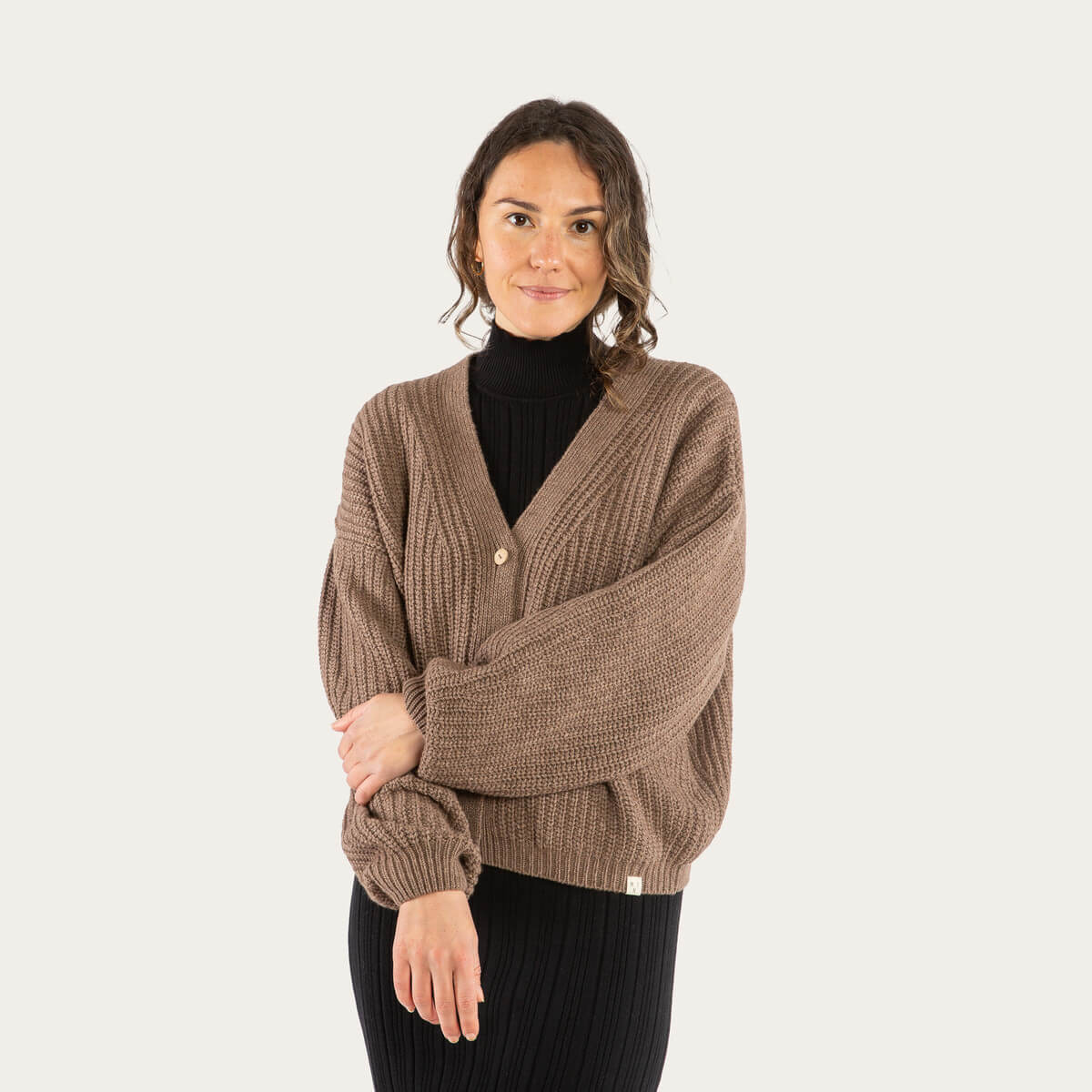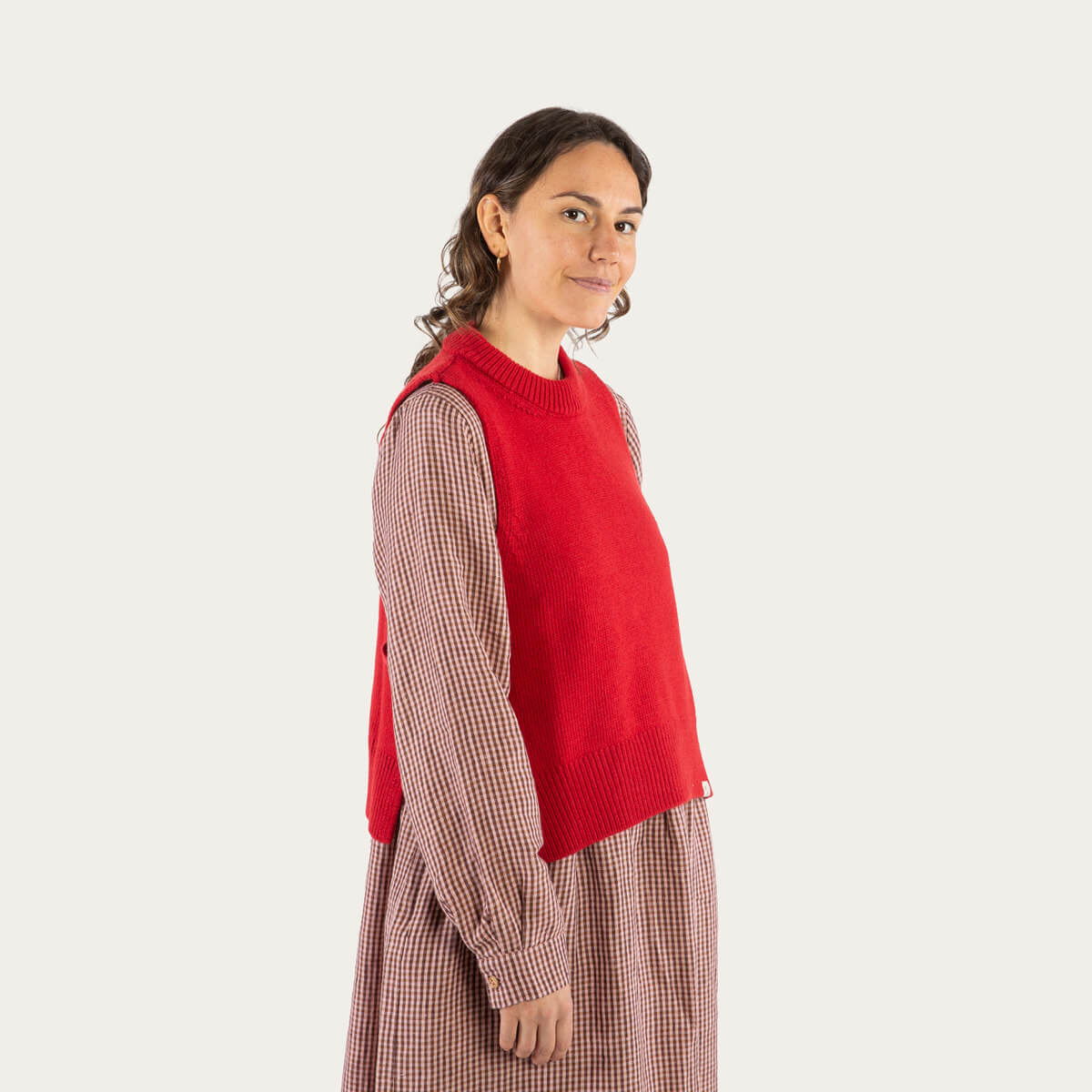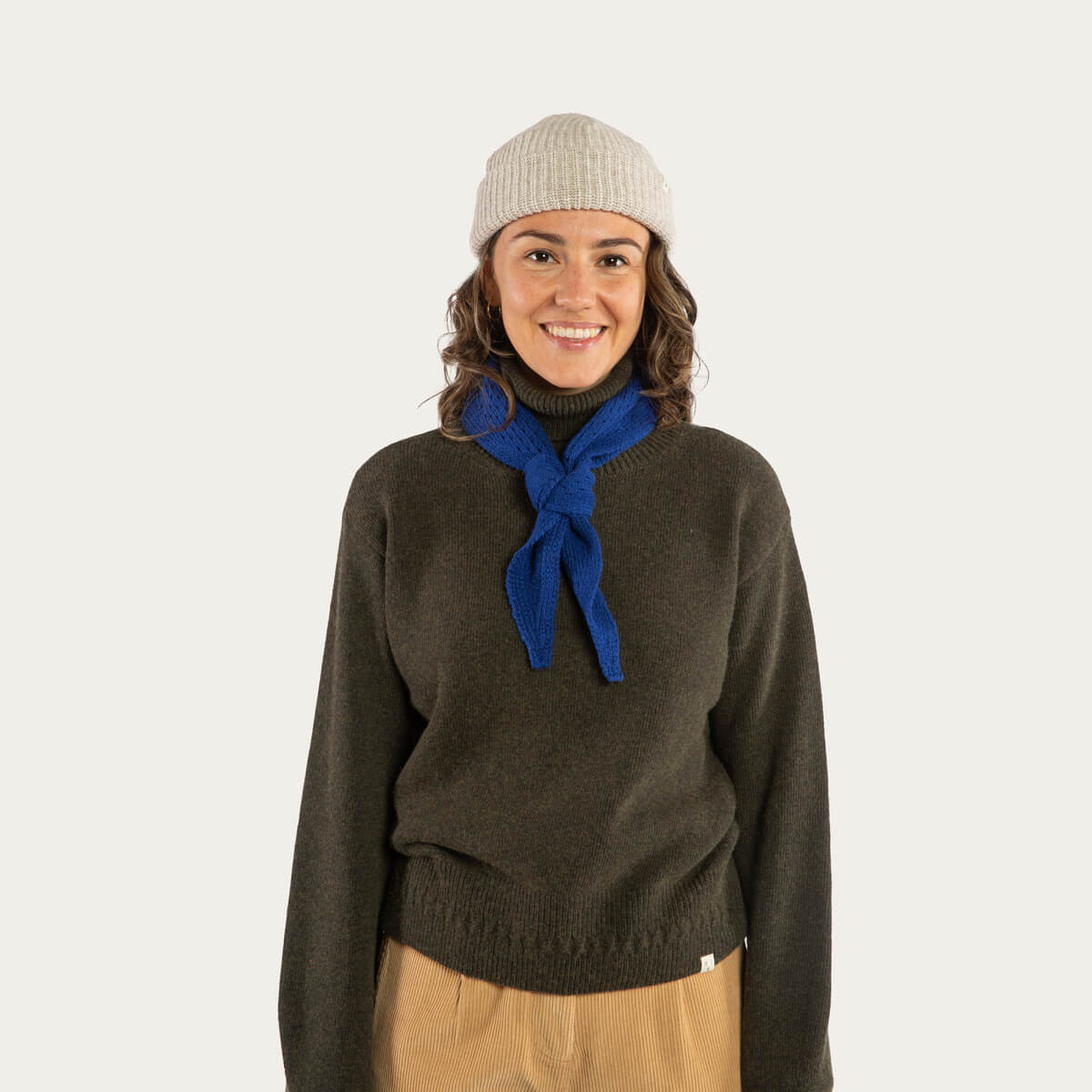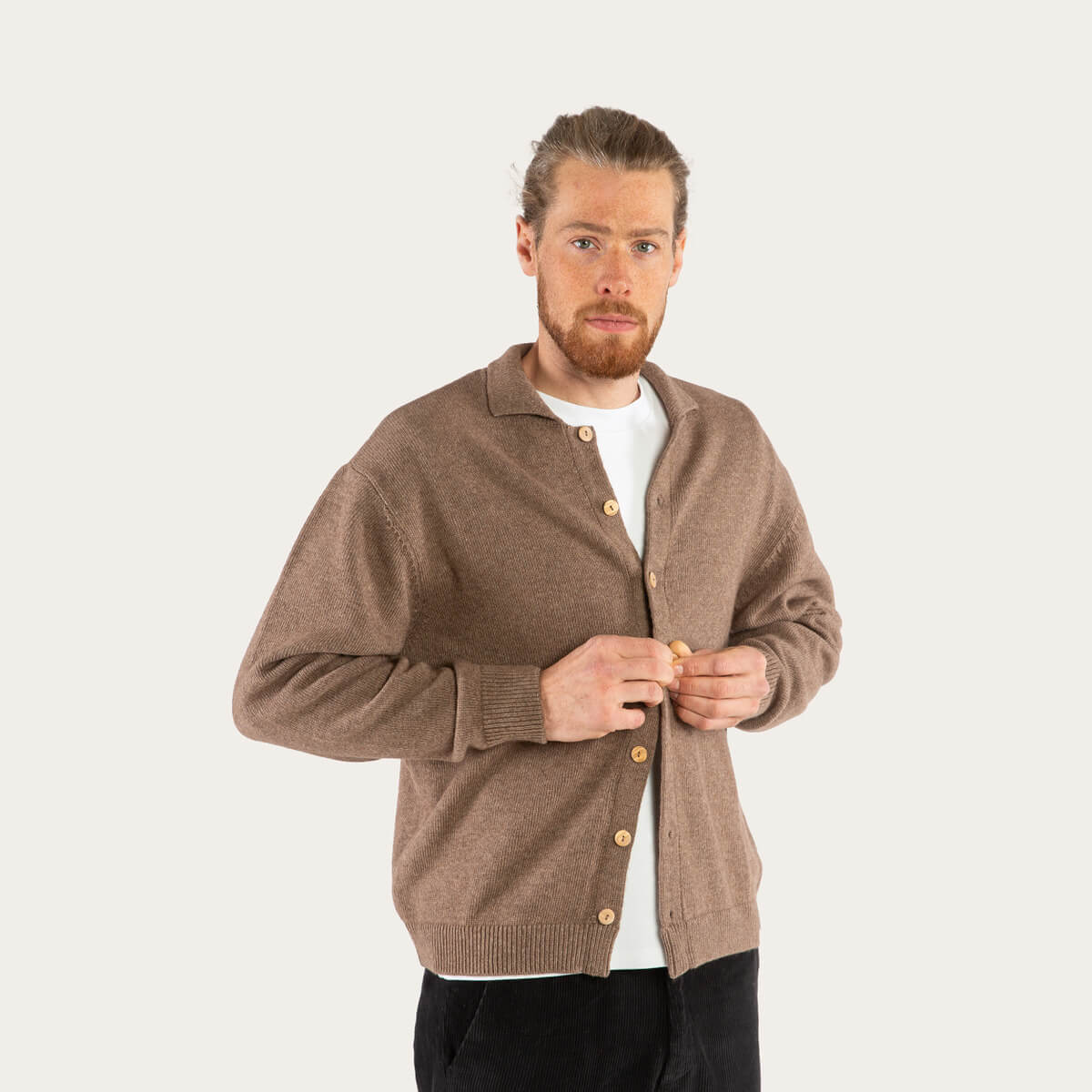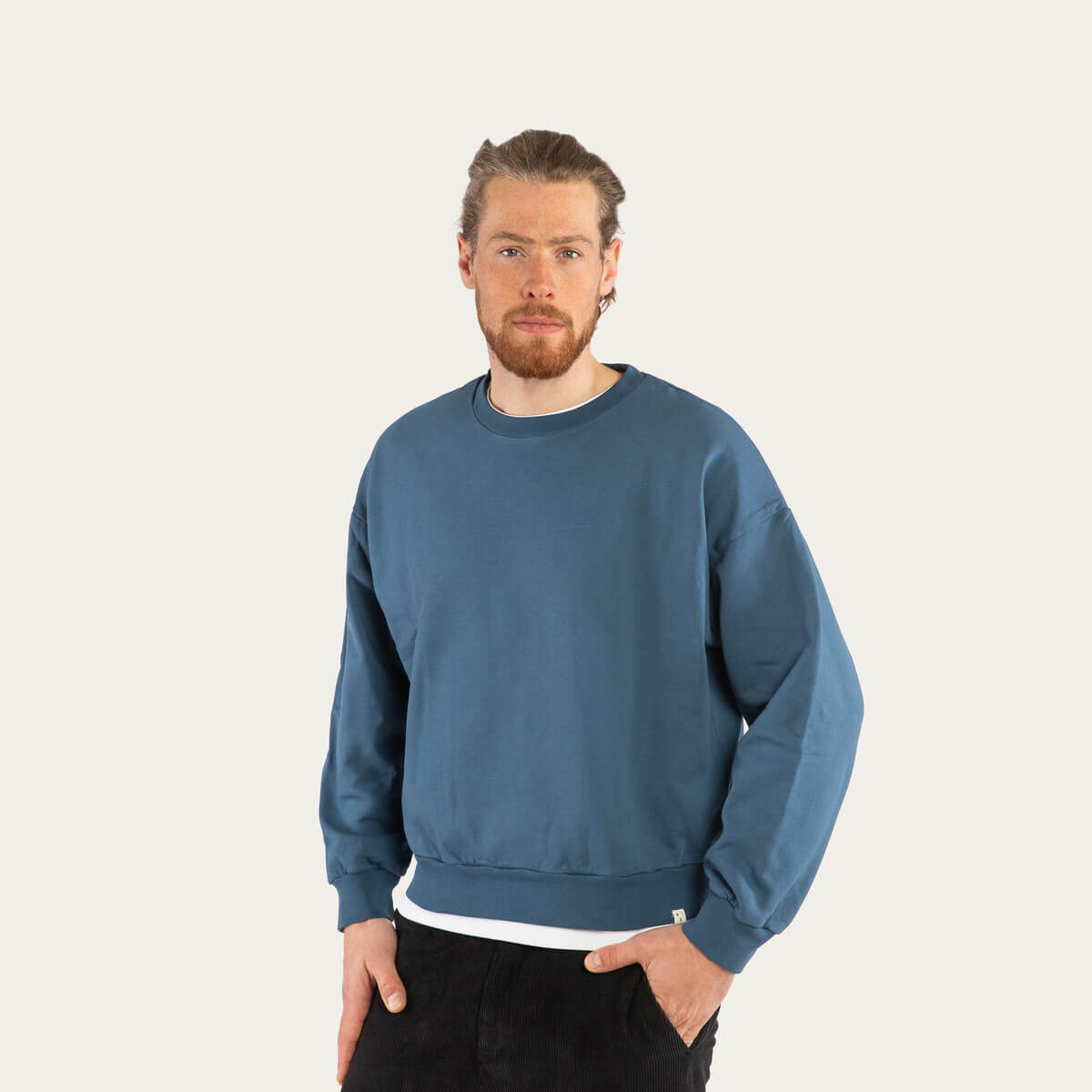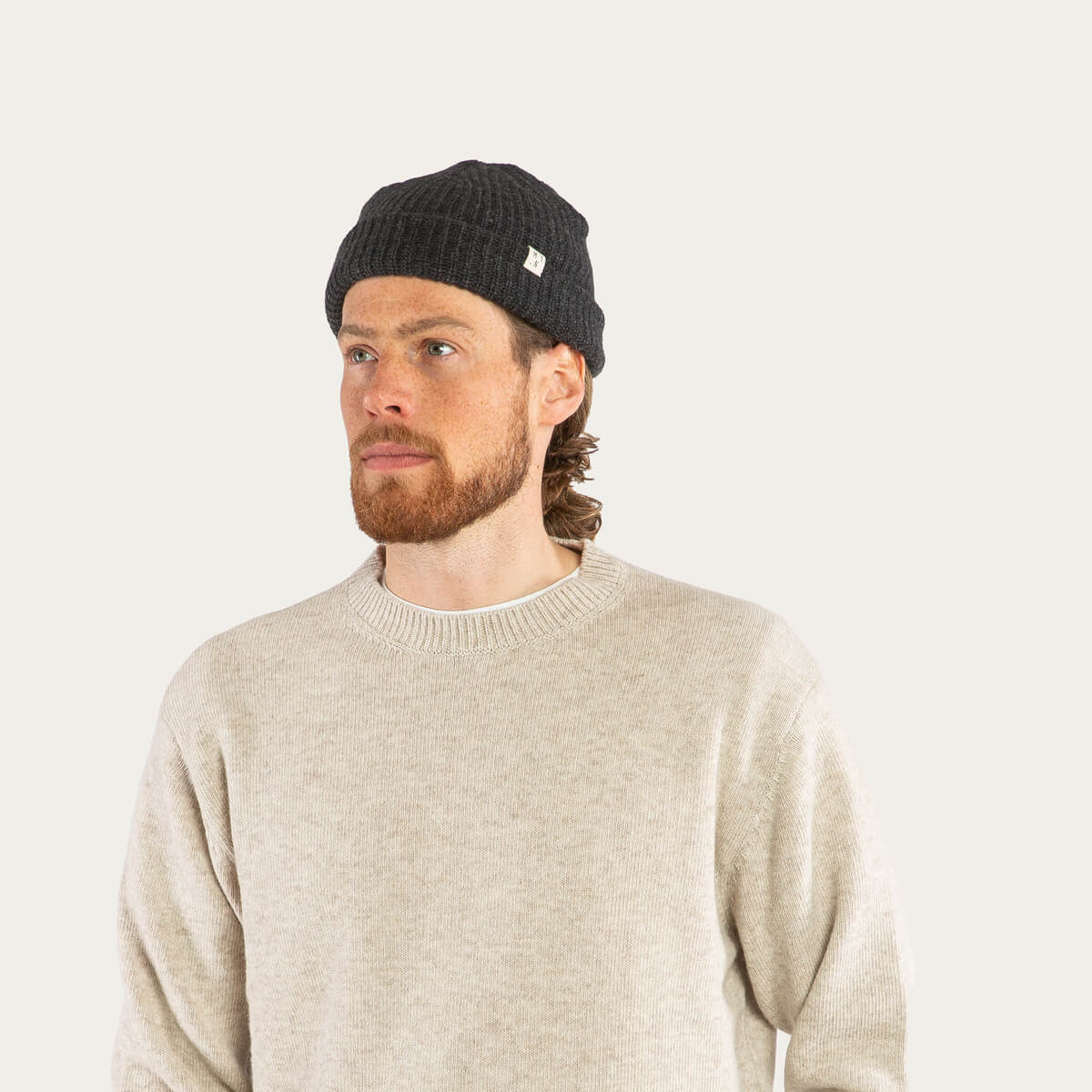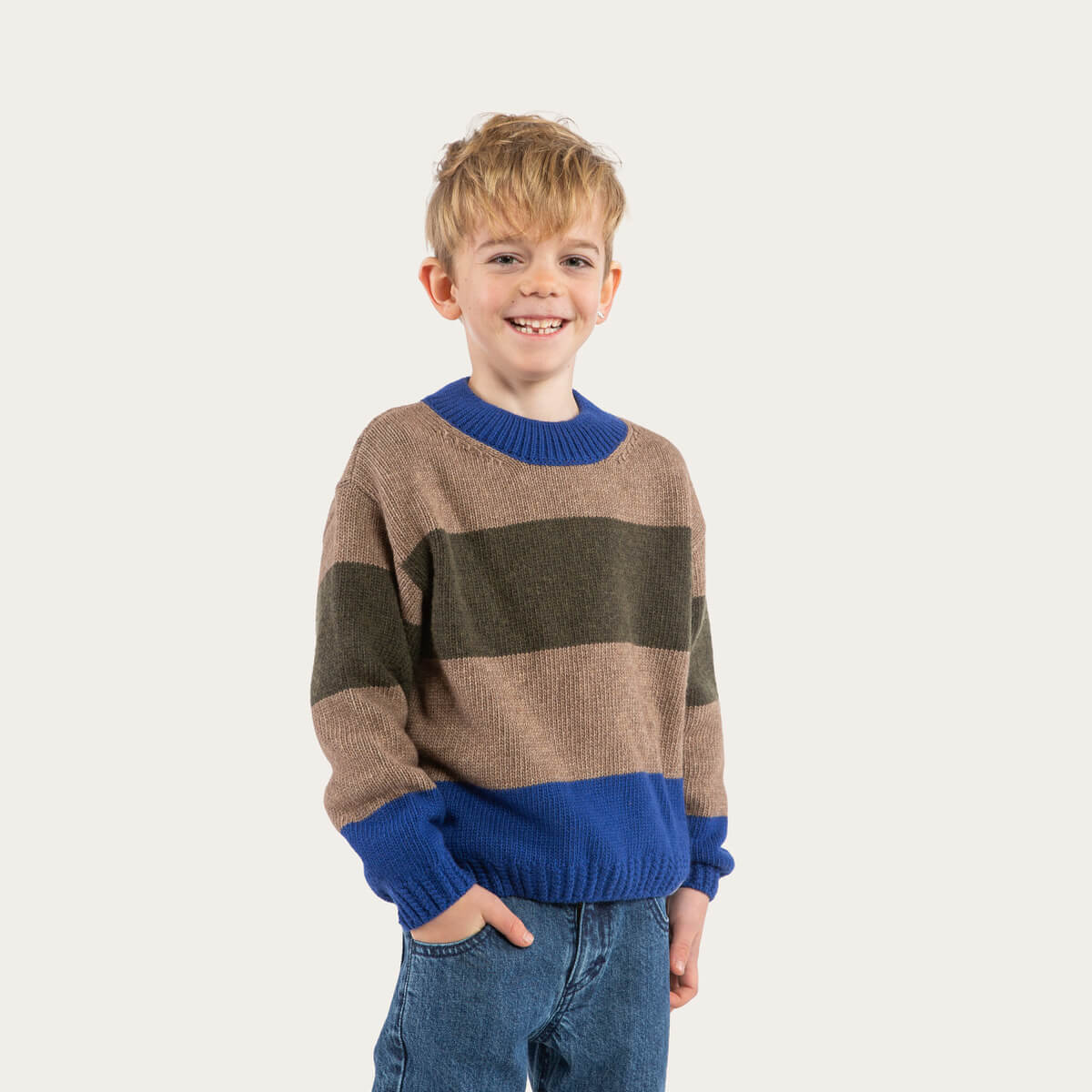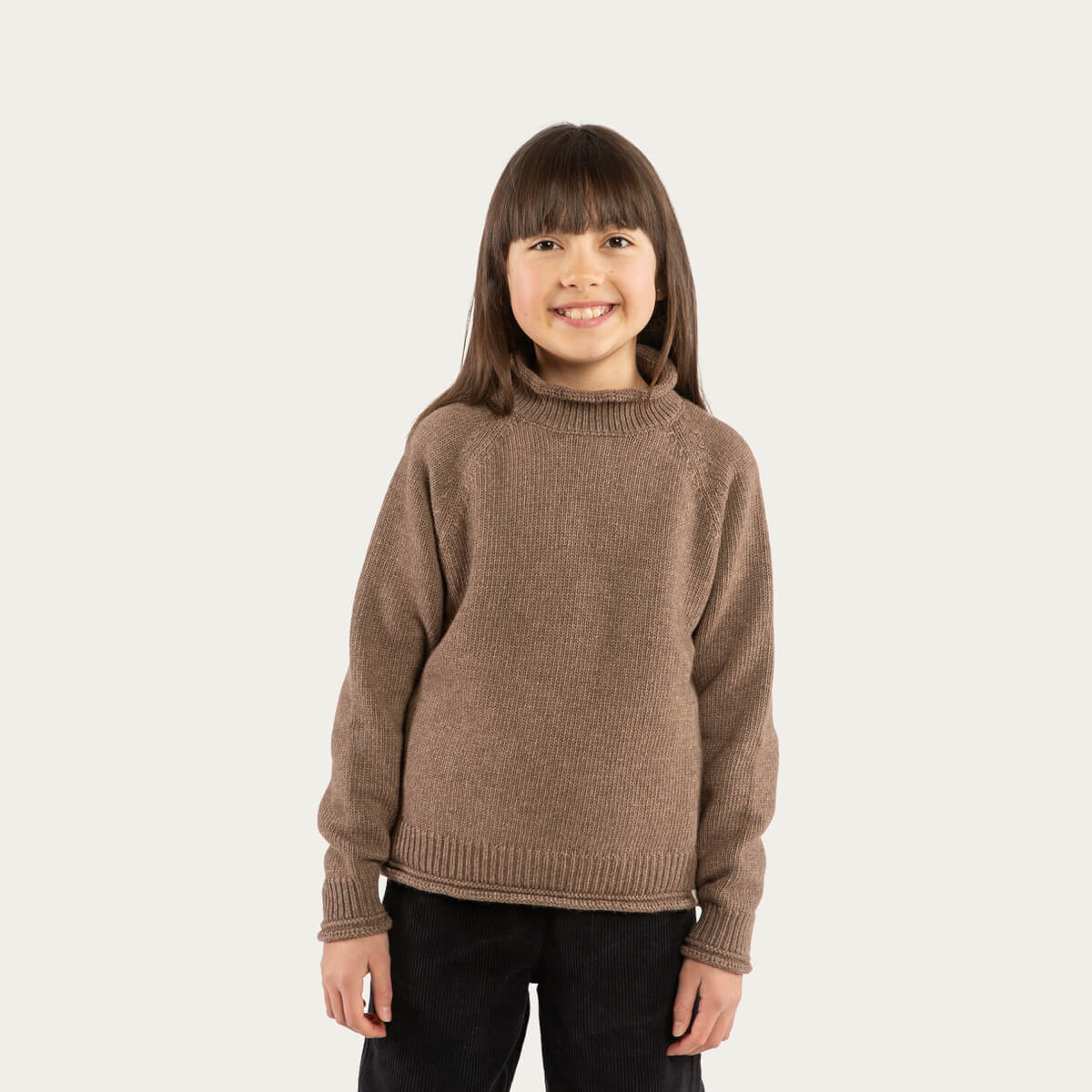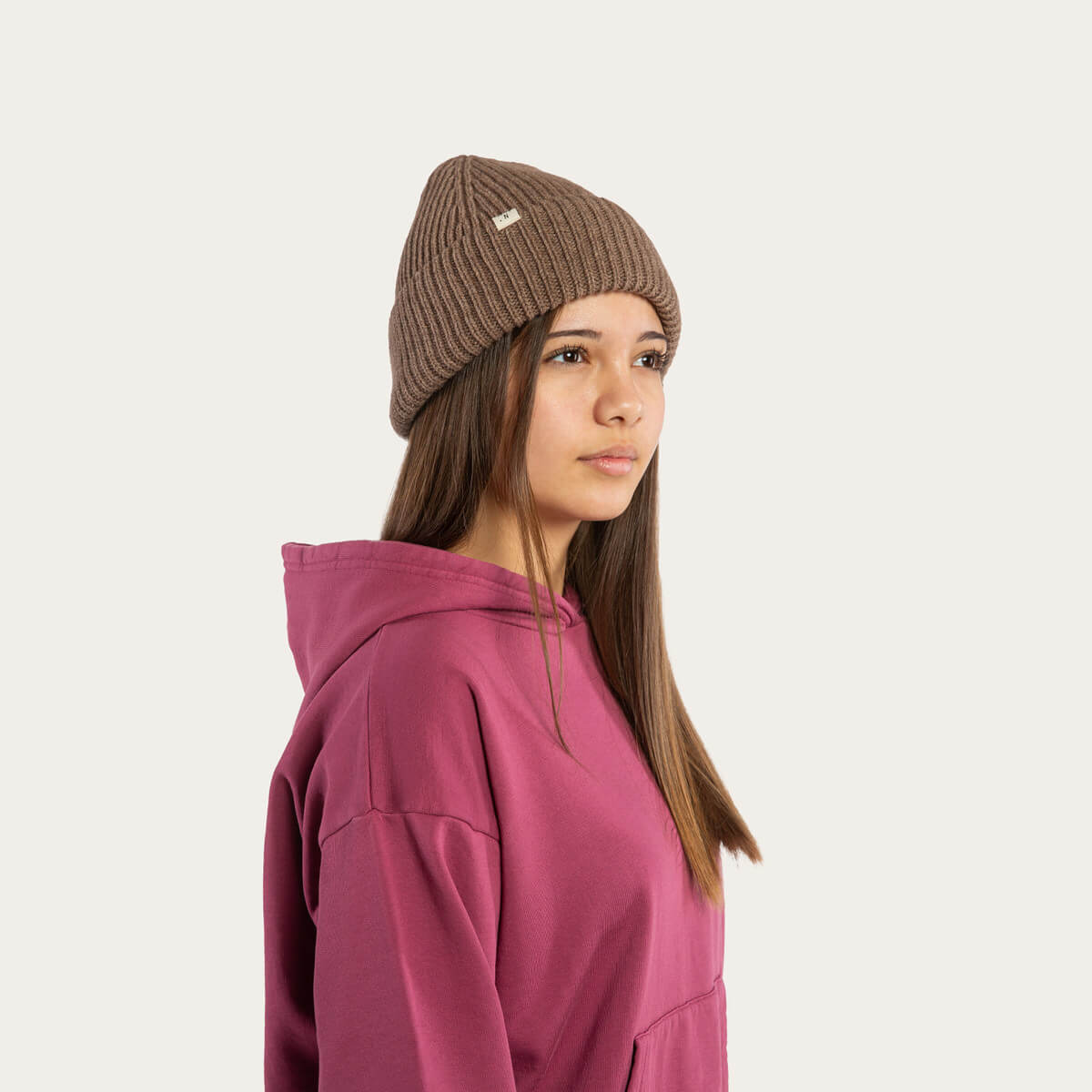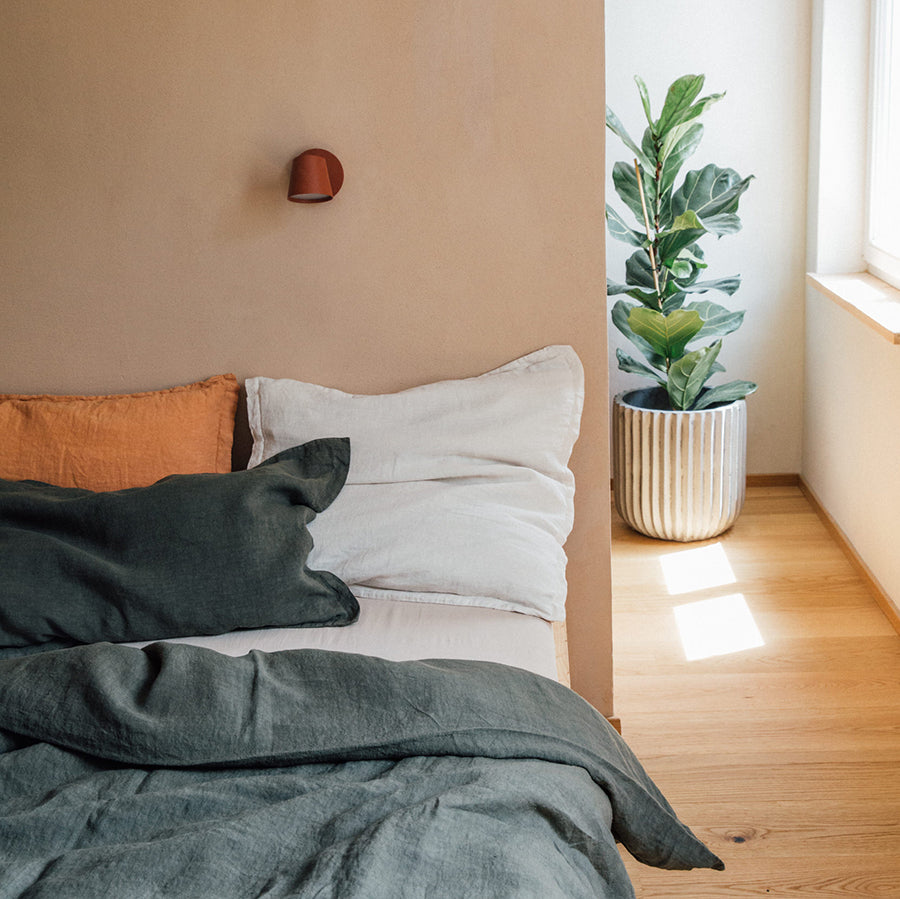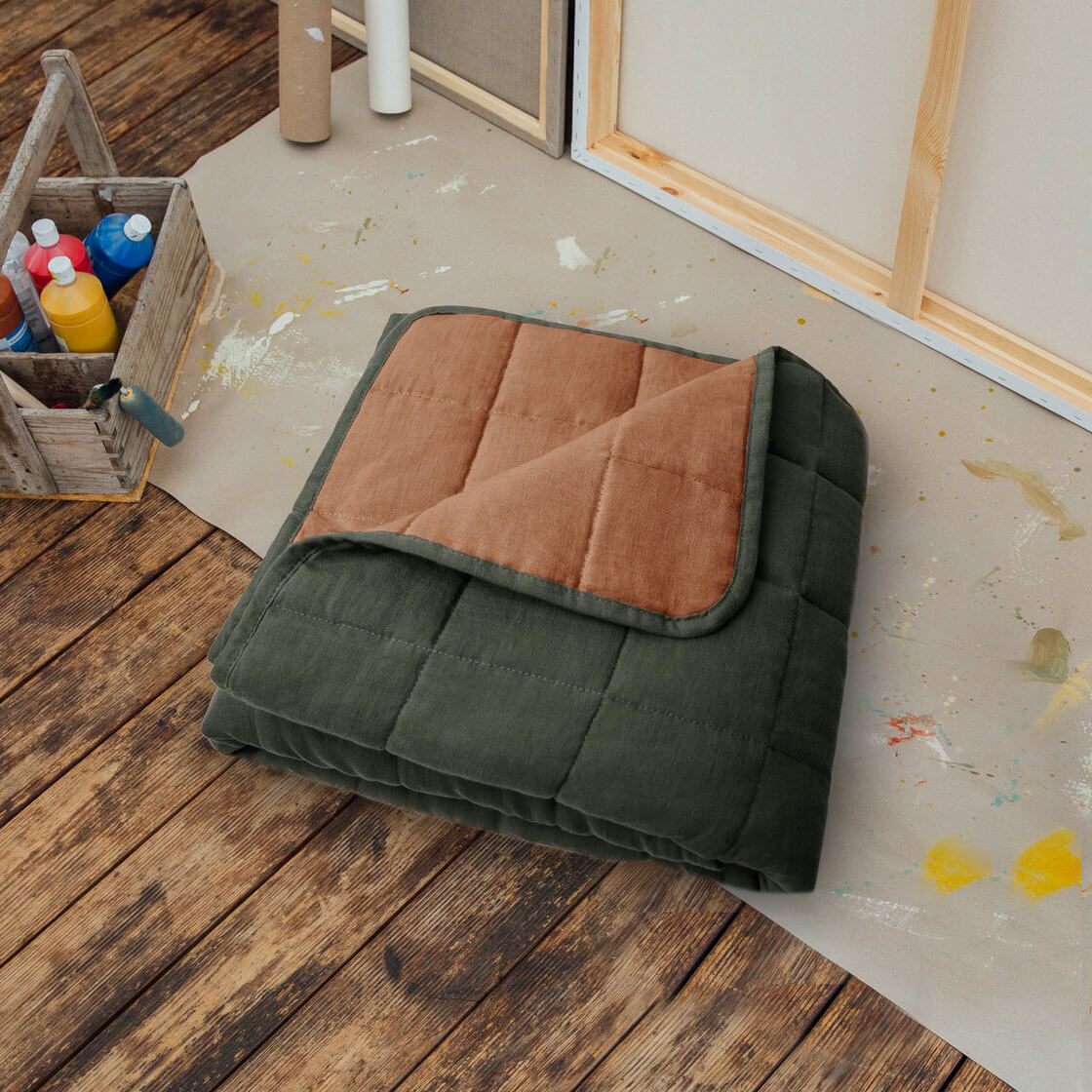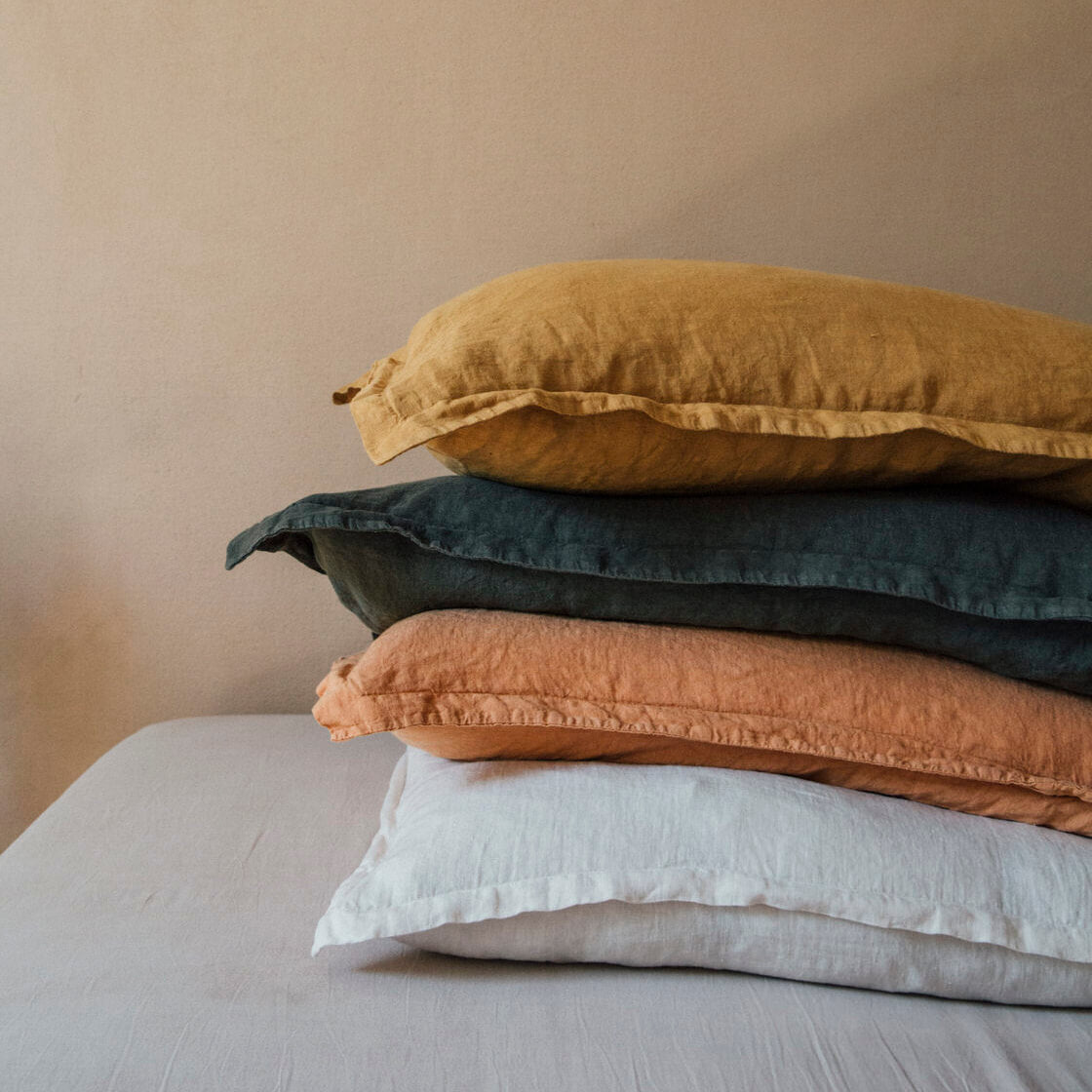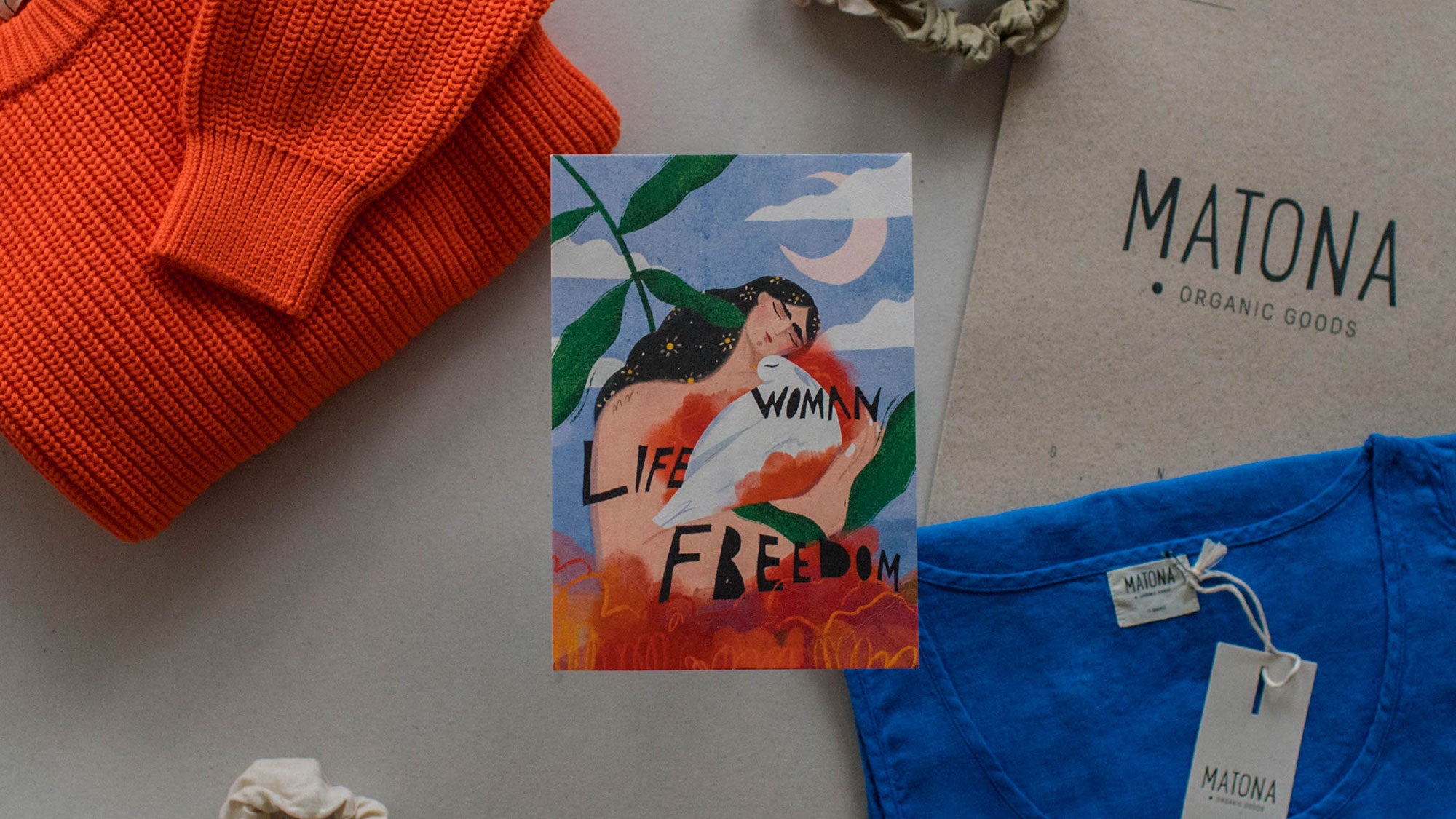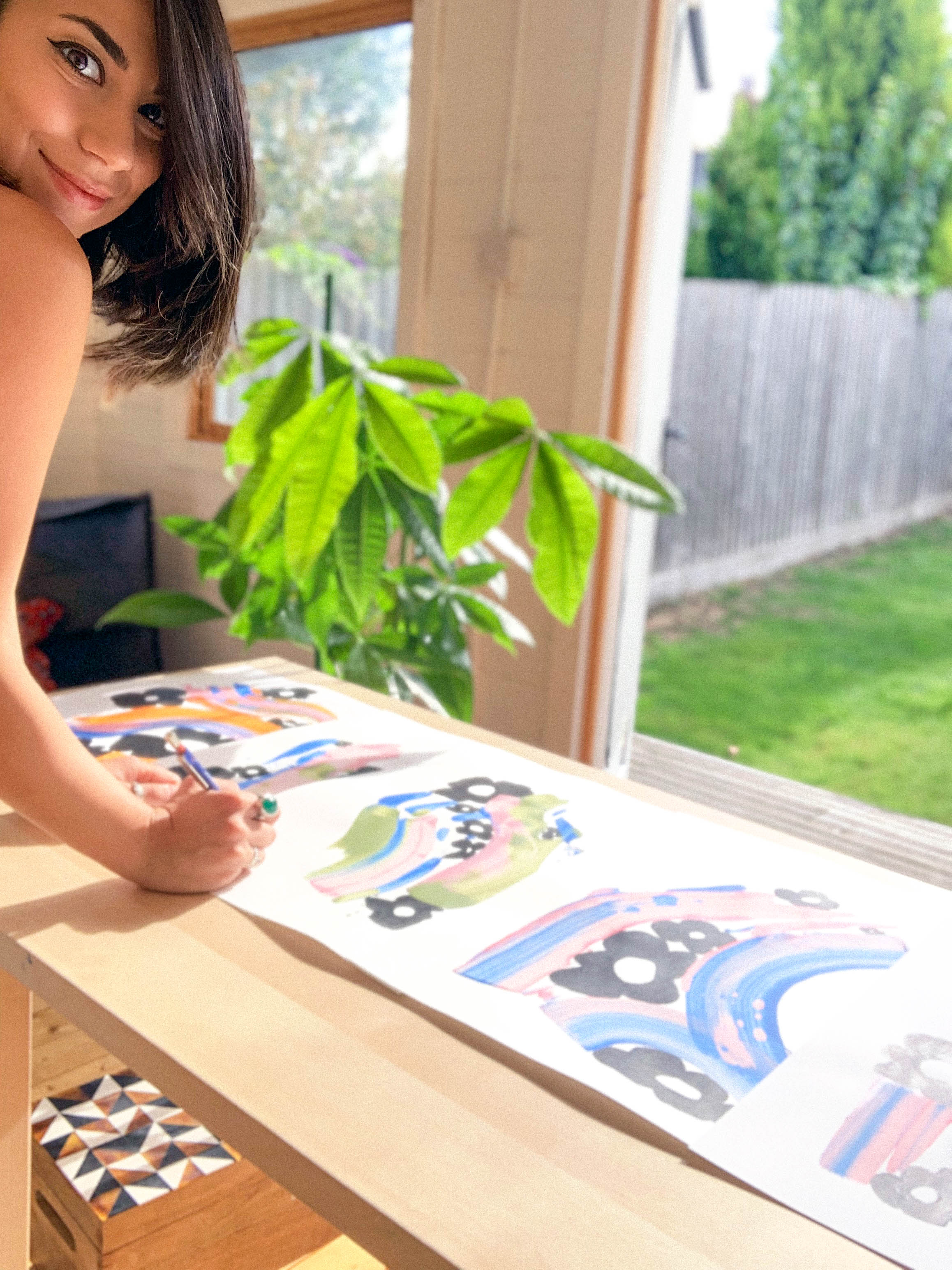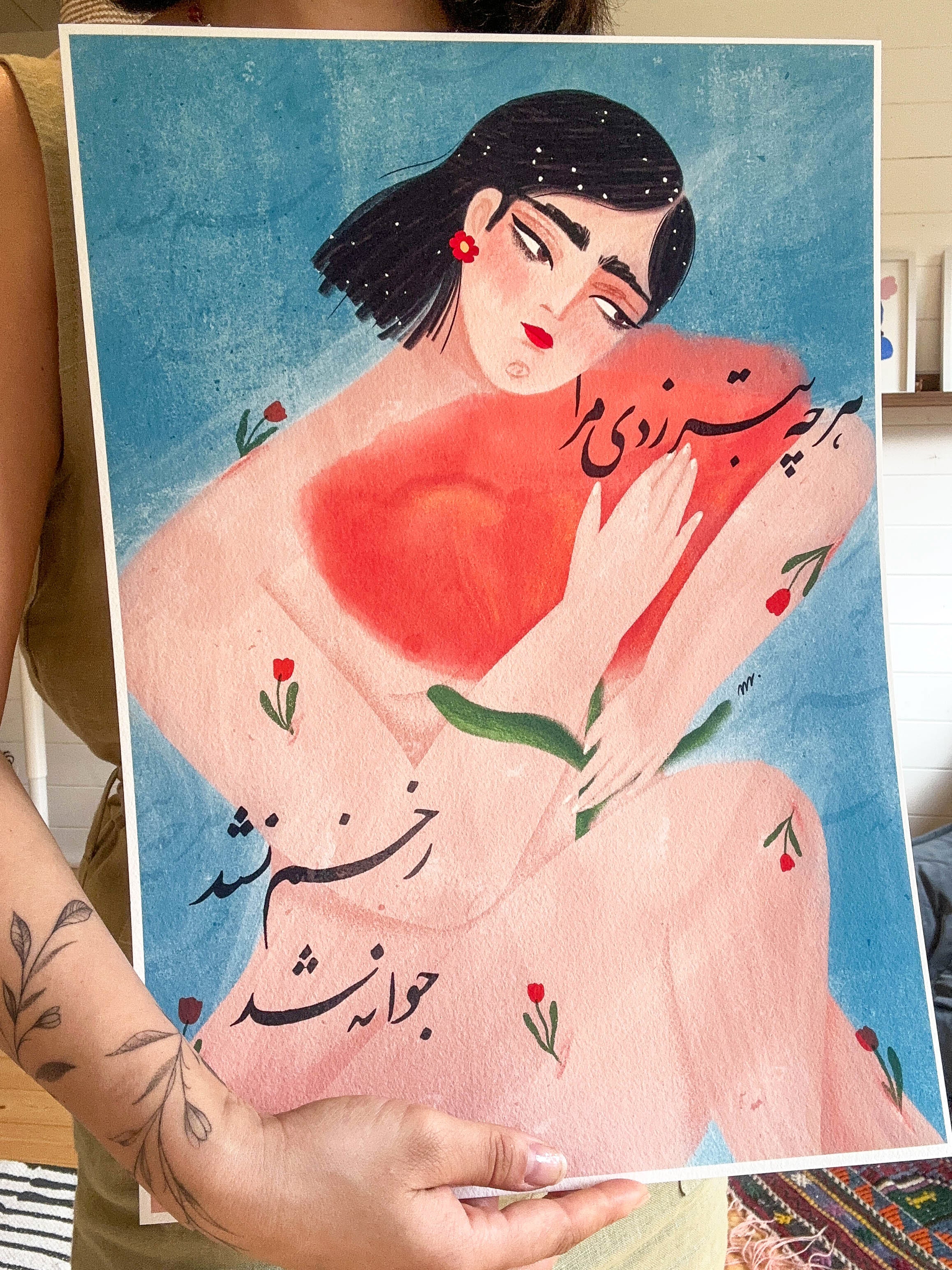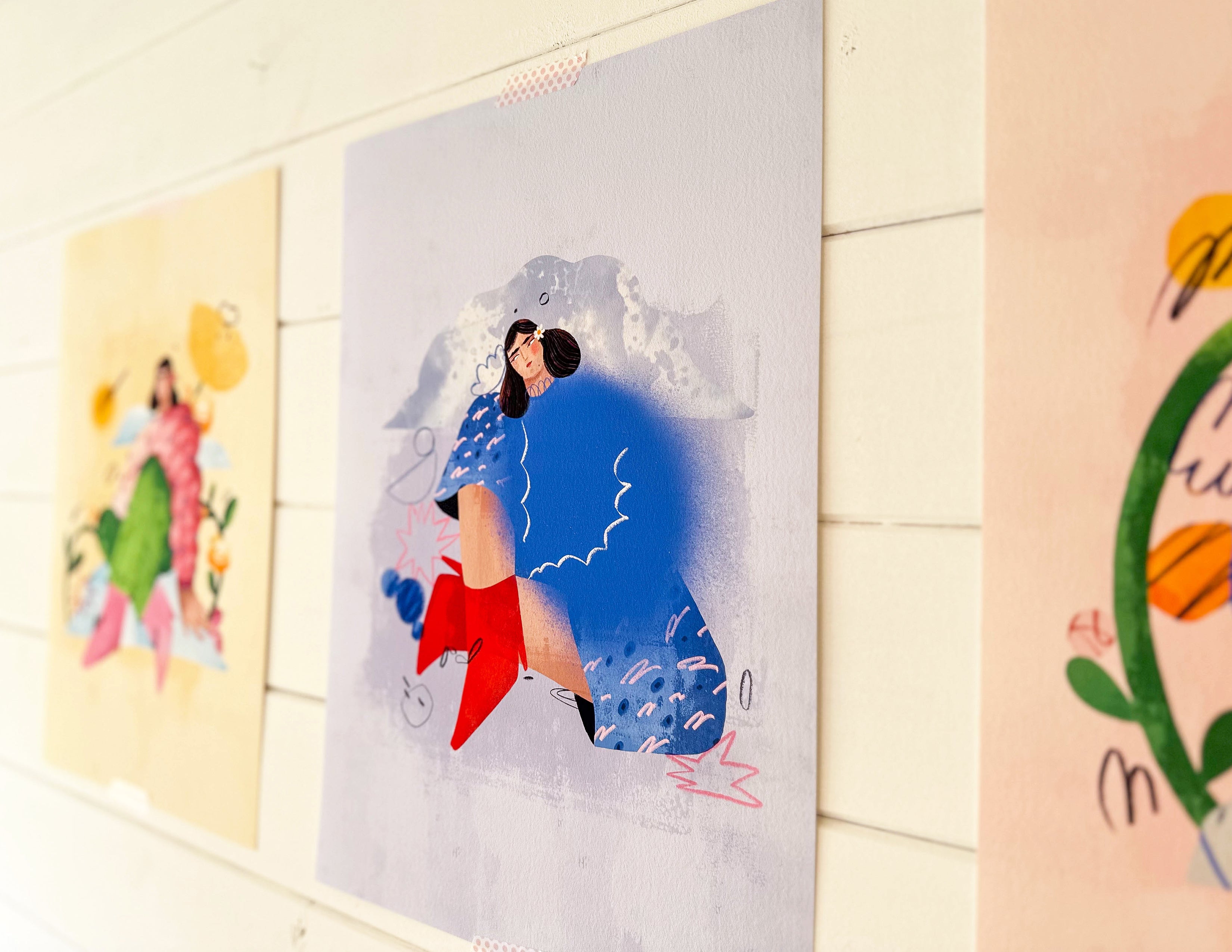Interview with Mahdis Nikou
On bold colours, women's rights and Iran - artist and illustrator Mahdis Nikou
Mahdis Nikou is an Iranian-born illustrator living in the UK. Mahdis campaigns for mental health, women's empowerment and environmental issues through her bold and original illustrations. Recently, she has focused on making the women-led Iranian revolution heard.
A Matona Interview
1. Can you give us some insight into your background and how you first became interested in art making?
I was born in Iran in the 90’s in a family of 5.
Since I was a child, drawing, playing with clay/ playdough and art & craft in general were some of my top favorite hobbies. In school I was never good at maths, physics and chemistry but the art class was when I would be the most excited about each week. From then, creating art was a relaxing activity for me and a way to express myself with different shapes, lines and colours. Growing up around my bigger sister and my youngest aunt who
were both passionate creatives has also had a direct impact on why I chose to peruse art as a career. After getting my diploma in graphic design in Iran I’ve secured my place in one of Tehran’s art universities but before I attend my first class in uni, destiny had other plans for me because I ended up moving to the UK entirely and started a new life.
The first year after moving to the UK, I was learning English in college while attending a course in art foundation and with the diploma I received from the course, I managed to get into the London College of Communication and studied graphic design for my bachelors.
Since graduation, I’ve been working as a graphic designer in the creative industry but in the past few years I have focused myattention more on expressive illustration and art making.
2. Is there a specific environment or material that’s integral to your work?
Most of my illustrations are digital and are created on iPad using the Procreate App. But I also work with ink and acrylic paint to create original drawings and textures which then I bring into my digital work.
3. You are born in Iran and are now based in the UK. How has that impacted your work?
I think adopting to a new culture and environment at a young age influence many aspects of my personality and my creative thinking. Both contrasting cultures of the Middle East and Europe come to play every time I’m making art and it’s more like a subconscious influence rather than controlled but I think that’s what makes my artistic style unique in its own ways.
4. In view of the current developments in Iran, a return to your home country would directly result in a threat to yourself. Do you feel “exiled” in the UK, and if so, what does this mean to you?
Absolutely. When I first started creating art for the Woman Life Freedom movement, I soon came to realisation that I may never be able to go back to Iran and if I do, it would be a huge risk and potentially result in terrible consequences for me and my family. This realisation was quite powerful and dark at first. It took me a while to process it in my head and come to peace with it in my heart. It was a huge sacrifice that I had to make for a greater purpose: to be the voice of Iranians who are fighting for their freedom, and I knew that I wasn’t the only one who has made this sacrifice. Every single Iranian in diaspora who is giving voice to the people of Iran is pretty much on the same boat. Although it’s been difficult to accept that I am exiled, one thing that is helping me to deal with it better is having hope that one day things will change, and I may be able to go back to Iran without fear for my life. Without remaining hopeful for a brighter future, I wouldn’t be able to do what I do. Believing in my heart that Iran will be free one day and being exiled is temporary is all I can do to stay motivated and positive.
5. Your body of work contains personal and collaborative projects around the topics of mental health, female empowerment & environmental art. With the start of the Iran’s new women-led revolution in September 2022 your focus shifted on amplifying the voices of Iranians who are fighting for their freedom. What are the recurring themes of your illustrations?
I think the main theme in my illustrations is self-expression and visualizing the feelings that different experiences in life give us. I’d like to draw challenging feelings mainly because it helps me to understand my own emotions and come to peace with them, but I’d also like to show that although some feelings may be dark and uncomfortable, there is still beauty and growth to be found in everything we experience in life.
I usually integrate self-expression with topics around women’s rights because it’s something that I can deeply relate to myself. As an Iranian woman who has spent the first 18 years of her life living under the ruling of a religious dictatorship in such hostile environment especially for women, I feel like I can bring these topics to life and communicate them with others in visual and compelling ways.
6. Is there anything else you would like us to know?
Although the “hype” of what is currently happening in Iran has diluted in the news across western platforms, (just like any other news that come on trend and disappears after a while), people in Iran are still fighting for their freedom and their basic human rights even though we may not see them as much on our newsfeeds anymore.
People across Iran are fighting with hope and none-violence acts of resistance. These come in different forms across the country, such as: Saying no to mandatory hijab rules in the country even though this act comes with big consequences such as high fines, arrest, prison time and getting lashes as punishment. Or gathering in smaller groups and holding peaceful protests to show solidarity with those who lost their lives fighting for their freedom in Iran. It is seen that some men walk around in the streets of Iran or show up at their workplaces while wearing hijab to show solidarity with Iranian women, some are standing up for women who are getting harassed by the morality police or their supporters in the streets because of their “improper hijab”. As well as that, multiple nationwide strikes have been taking place across Iran as an act of protest to the current situation.
These cultural shifts show that Iran’s women led revolution is spreading its roots and strengthening its foundations across different communities with different mindsets within the country and people are finding new ways to resist the dictatorship and fight back.
Please continue to show your solidarity with brave people of Iran in any way you can and we hope one day we get to welcome you to our beautiful country and show you our colorful and joyful culture free of fear.
Thank you for this exciting interview!
If you want to see more of Mahdis, check out her Instagram profile @mahdisnikou, or her homepage www.mahdisnikou.co.uk

